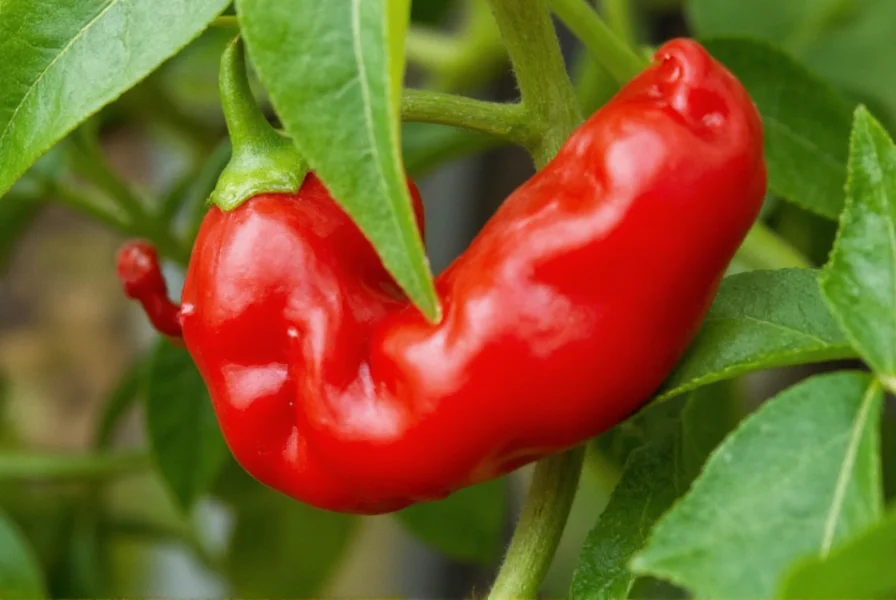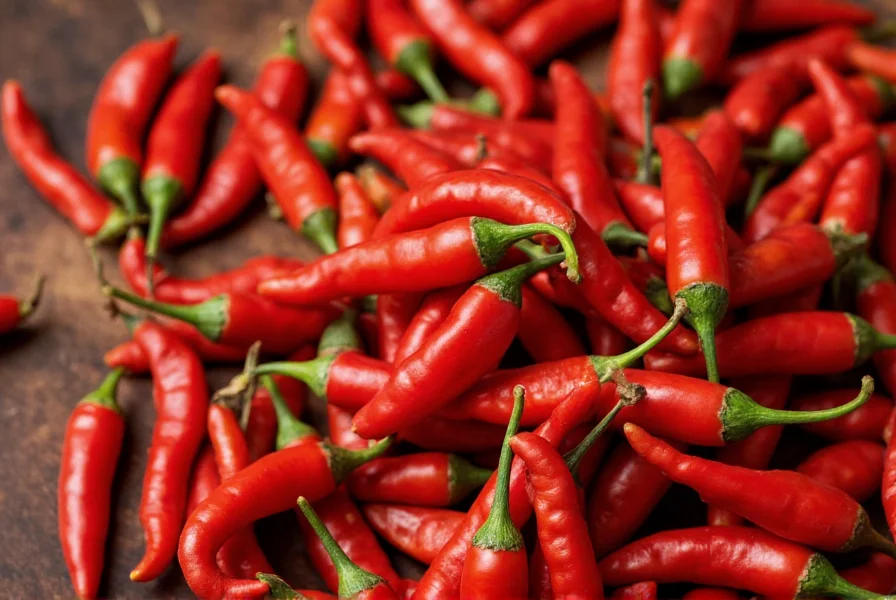The Trinidad Scorpion pepper represents the pinnacle of chili heat for many enthusiasts and breeders. First documented in the late 2000s, this Capsicum chinense variety emerged from the volcanic soils of Trinidad's Moruga region, where unique growing conditions contribute to its extraordinary spiciness. While often confused with the Carolina Reaper (which actually descended from Trinidad Scorpion genetics), the original Trinidad Scorpion maintains a distinct flavor profile beyond its intense heat.
Understanding the Heat: Scoville Scale and Measurement
When discussing Trinidad Scorpion pepper heat level, we enter the realm of extreme capsaicinoids. Laboratory tests show most specimens register between 1.2 and 2 million SHU, placing them among the top five hottest peppers globally. To contextualize this measurement:
| Pepper Variety | Scoville Heat Units | Heat Comparison |
|---|---|---|
| Trinidad Scorpion | 1,200,000-2,000,000 | 400-800x hotter than jalapeño |
| Carolina Reaper | 1,400,000-2,200,000 | Slightly hotter on average |
| Ghost Pepper (Bhut Jolokia) | 800,000-1,000,000 | Significantly milder |
| Habanero | 100,000-350,000 | 5-12x milder |
Modern testing reveals significant variation between individual peppers, even from the same plant. This natural inconsistency means how hot is Trinidad Scorpion compared to Carolina Reaper depends on specific specimens. The Moruga Red subtype often tests hotter than the original yellow variety, while the less common Chocolate Scorpion offers earthier notes with comparable heat.
Physical Characteristics and Growth Requirements
Trinidad Scorpion plants grow as compact bushes reaching 3-4 feet in height, producing distinctive pods with:
- Bumpy, wrinkled skin texture
- Tapered shape with characteristic curved tail
- Color transition from green to bright red (or yellow/chocolate)
- Typical size of 1.5-3 inches long
Successful cultivation of growing Trinidad Scorpion peppers requires specific conditions:
- 10-12 hours of direct sunlight daily
- Well-draining soil with pH 6.0-7.0
- Consistent moisture without waterlogging
- 80-90°F daytime temperatures
- 150-180 day growing season
Gardeners attempting Trinidad Moruga Scorpion vs Trinidad Scorpion cultivation should note the Moruga variety typically produces more pods per plant but requires slightly longer maturation. Both varieties benefit from container growing in cooler climates, allowing temperature control during fruiting stages.

Culinary Applications and Flavor Profile
Despite its fearsome reputation, the Trinidad Scorpion offers complex flavor notes beyond pure heat. When used judiciously, it contributes:
- Fruity undertones reminiscent of citrus and apricot
- Subtle smokiness in dried form
- Floral notes in certain subtypes
- Distinctive earthiness in chocolate varieties
Professional chefs approach Trinidad Scorpion pepper uses with precision:
- Always wear nitrile gloves during handling
- Remove seeds and membranes (where most capsaicin concentrates)
- Start with 1/16 teaspoon of powdered pepper per dish
- Allow heat to mellow by cooking 24-48 hours before serving
- Balance with acidic ingredients like lime juice
For home cooks exploring safely handling Trinidad Scorpion chili, remember that dairy products (milk, yogurt) neutralize capsaicin better than water. Keep baking soda paste nearby for skin exposure, and avoid touching your face during preparation.
Historical Context and Naming Confusion
The Trinidad Scorpion's history traces back to Trinidad's pepper-growing traditions, where local farmers selectively bred superhot varieties. The "scorpion" name derives from the curled tail resembling a scorpion's stinger, not from any actual scorpion connection. Confusion often arises between:
- Original Trinidad Scorpion (Yellow)
- Trinidad Moruga Scorpion (Red)
- 7 Pot Scorpion (hybrid variety)
Understanding the Trinidad Scorpion pepper origin helps clarify these distinctions. The authentic variety comes exclusively from Trinidad and Tobago, while many "scorpion" peppers sold globally represent hybrid derivatives with potentially different heat profiles.

Safety Considerations for Extreme Heat Peppers
Working with Trinidad Scorpion requires serious precautions beyond standard kitchen safety:
- Use certified nitrile gloves (latex provides insufficient protection)
- Wear eye protection during cutting
- Work in well-ventilated areas to avoid airborne capsaicin
- Keep separate cutting boards and utensils dedicated to superhots
- Never use blenders without proper sealing (aerosolized capsaicin is dangerous)
If accidental exposure occurs, follow these steps:
- Skin contact: Wash with soap and cold water, then apply milk or yogurt
- Eye exposure: Flush with saline solution for 15 minutes
- Respiratory issues: Move to fresh air immediately
- Overconsumption: Eat dairy products, avoid alcohol and carbonated drinks
Frequently Asked Questions
How does the Trinidad Scorpion compare to the Carolina Reaper in heat?
While both peppers exceed 1.5 million SHU, Carolina Reaper generally tests slightly hotter on average (1.4-2.2 million SHU vs 1.2-2 million SHU). However, individual Trinidad Scorpion specimens can occasionally surpass specific Reaper pods. The Reaper delivers more immediate heat, while the Scorpion's burn develops more slowly but lasts longer.
Can you grow Trinidad Scorpion peppers outside tropical climates?
Yes, with proper care. Gardeners in temperate zones should start seeds indoors 10-12 weeks before last frost, use containers for temperature control, provide 12+ hours of artificial light, and maintain soil temperatures above 75°F. The plants typically produce fewer pods outside tropical regions but can still yield authentic superhot peppers.
What's the best way to preserve Trinidad Scorpion peppers?
Freezing maintains flavor best - simply place dried peppers in airtight containers. For long-term storage, powdering provides excellent preservation but requires careful handling. Never use plastic containers that might degrade from capsaicin exposure. Properly stored frozen peppers retain quality for 1-2 years, while powders remain potent for 6-12 months.
Are there any health benefits to consuming Trinidad Scorpion peppers?
In moderation, capsaicin offers potential benefits including pain relief, improved circulation, and metabolism boost. However, the extreme concentration in Trinidad Scorpion means these benefits come with significant risks. Medical professionals don't recommend consuming superhot peppers for health purposes due to potential gastrointestinal damage and other complications from excessive capsaicin exposure.











 浙公网安备
33010002000092号
浙公网安备
33010002000092号 浙B2-20120091-4
浙B2-20120091-4